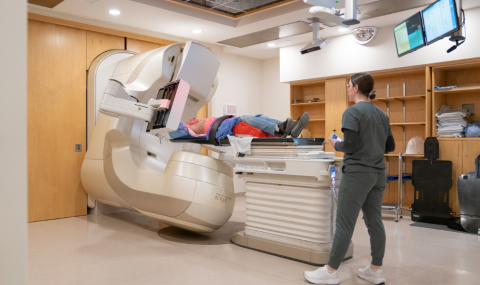|
|
ANSWER:
As soon as hourly urine output assessment is no longer necessary. Indwelling catheters increase the risk for urinary tract infections which are a life-threatening complication of acute spinal cord injury. Intermittent catheterization, which decreases the risk for urinary tract infections, must be introduced.
Discussion
Immediately following acute spinal cord injury, spinal shock develops. Spinal shock is characterized by flaccid paralysis (loss of bladder tone) below the level of the injury, and loss of spinal cord reflexes including bladder and bowel sphincter control. Spinal shock often coincides with neurogenic shock, which is evidenced by loss of autonomic control (bradycardia, vasodilation, hypotension). Spinal shock can persist for several weeks, and is associated with an inability to retain urine or bowel contents. Although urinary incontinence may be present, bladder emptying is also dysfunctional, making some form of catheterization mandatory.
When spinal shock ends, spinal reflexes begin to return. Bulbocavernal, bladder and rectal sphincter reflex are amont the first responses to appear and are generally signs that the spinal shock phase is ending. The ability to retain urine is restored, and spastic movements of the paralyzed limbs may appear (care should be taken not to mistake these involuntary movements for a return of voluntary movement).
Although bladder and bowel sphincter tone may allow the paralyzed individual to maintain continence of urine and feces, the cord injury prevents the individual from contracting the bladder and relaxing the sphincters to facilitate elimination. This places them at risk for autonomic dysreflexia.
As soon as hourly urine output is no longer needed, routine intermittent catheterization should commence. Catheterization should be performed q 4 h initially. The goal is to perform catheterization frequency to keep bladder volume < 500 mL. Catherization frequency can be increased if adquately maintaining this goal.
Care must be taken to ensure that catheterization frequency is sufficient to prevent bladder distention, as a full bladder can trigger autonomic dysreflexia. Bladder distention may also reduce blood supply and increase the risk for infection. Intermittent catheterization frequency should increase when fluid intake rises or diuretics are administered.
Following catheter removal, incomplete bladder sphincter control may cause some urinary incontinence. Condom drainage can be used to protect skin and linen, however, it is important to continue to perform intermittent catheterization, as complete bladder emptying will not occur. In lower cord or incomplete injuries, some patients may be trained to
O'Donnell, W. (1987). Neurological management in patient with acute spinal cord injury. Critical Care Clinics. July. pp 599-608.
Reed, MA. (1987). Nursing consideration in acute spinal cord injury. Critical Care Clinics. July. pp 680, 687-688.
Brenda
Morgan
Clinical
Educator, CCTC
July
7, 2000
|
|



